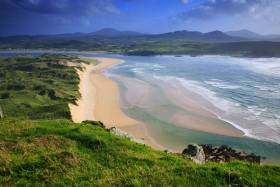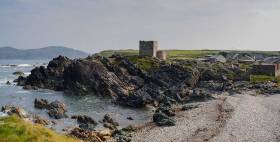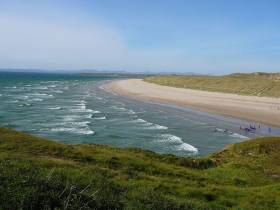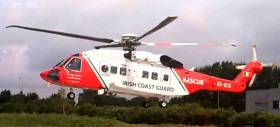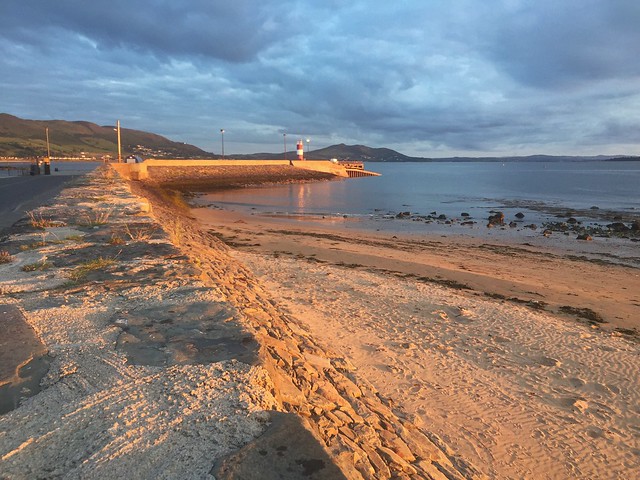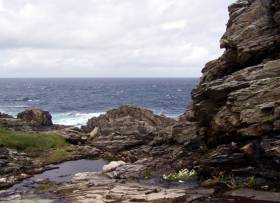Displaying items by tag: Donegal
Body Found In Search For Missing Holidaymaker Off Inishowen
#IsleOfDoagh - A body has been found this afternoon (Thursday 1 September) in the search for a man missing from the Isle of Doagh since Monday evening.
As previously reported on Afloat.ie, the man was reported missing by his family after going swimming during a camping holiday on the Inishowen Peninsula.
But according to The Irish Times, a body was recovered at Five Fingers Strand across from Doagh in the search for 59-year-old Tony Griffiths.
Search Resumes For Missing Holidaymaker Off North Donegal
#Missing - The search continues today (Wednesday 31 August) for a man missing after going swimming off the Inishowen Peninsula in Co Donegal this past Monday.
According to The Irish Times, the man in his 50s was reported missing at midnight on Monday by his family, with whom he was on a camping holiday on the Isle of Doagh just south of Malin Head.
The search comes just days since the body of soldier Gavin Carey was recovered off the south Donegal coast near Bundoran after he got into difficulty while swimming a week ago.
Body Of Missing Soldier Recovered Off Donegal Coast
#Donegal - A body recovered off the Donegal coast yesterday morning (Sunday 28 August) has been identified as missing soldier Gavin Carey, according to BreakingNews.ie.
Corporal Gavin Carey was reported missing after getting into difficulty while swimming with fellow soldiers at Tullan Strand last Tuesday 23 August, as previously reported on Afloat.ie.
Defence Forces chief of staff Vice Admiral Mark Mellett expressed his sorrow over the tragedy, with Taoiseach Enda Kenny also offering his condolences to Corporal Carey's family in Mullingar and colleagues at Custume Barracks in Athlone.
BreakingNews.ie has much more on the story HERE.
Donegal Launches New Atlantic Coastal Trail
#CoastalNotes - Donegal's history and relationship with the coastline are celebrated by a new coastal trail launched earlier this month.
As the Donegal Democrat reports, a special training programme has been developed for business owners and others along the new Atlantic Coastal Trail to "teach the people of this county to be proud of the story of Donegal", in the words of Údarás na Gaeltachta's Meadbh Seoige.
The Gaeltacht authority is one of a number of partners in the initiative to promote the county's "maritime leisure and seafood experiences" as highlighted by Donegal Cathaoirleach Terence Slowey.
"We’re working on where we fall short in visitor numbers," explained Donegal County Council chief executive Seamus Neely. "One statistic is that as little as 12% of tourists who visit the Wild Atlantic Way actually travel north of Galway city."
The Donegal Democrat has much more on the story HERE.
Donegal Is 'Hidden Paradise' For Adventurers
#Donegal - The coastline of Co Donegal is as much an attraction for adventure tourists as it is for those drawn to its rugged beauty, according to Outside magazine.
And some of those seeking thrills have even made the north-east county their home – such as Scottish-born climbing guide Iain Miller, who leads the magazine's Stephanie Pearson to breathtaking heights at once startlingly remote and surprisingly accessible.
But it's not just about climbers seeking the challenge of Donegal's sea stacks, nor the big swells that bring top surfers to the county in ever increasing numbers.
Sea kayakers, too, have coastal nooks and crannies to explore when the weather permits, while hikers have miles of the Irish portion of the International Appalachian Trail – which crosses one of Europe's highest sea cliffs in Slieve League.
Outside has much more on the story HERE.
Lobsterman Winched To Safety By Sligo Coastguard Helicopter After Getting Caught In Own Ropes
#Rescue - A lobster fisherman was rescued after getting tangled in his vessel's ropes when it overturned off the Donegal coast on Saturday evening (9 April).
As TheJournal.ie reports, the rescue of the solo fisherman proved difficult for local coastguard and lifeboat teams due to the heavy swell at Inishinny, off Arranmore Island.
That's when the Sligo-based Irish Coast Guard helicopter Rescue 118 came in to free the man from his vessel and winch him to safety.
Rescue 118 was later called out to rescue a number of surfers in difficulty of the Leitrim coast, as previously reported on Afloat.ie.
Bundoran RNLI Lifeboat Called to Donegal Town
The volunteer crew of Bundoran RNLI were last night requested to launch by Malin Head Coast Guard to reports of a person in the water at the pier in Donegal Town.
Following a 999 call from some passers by, the lifeboat was paged just after 11.45pm and launched around 11:53pm, proceeding to Donegal Town. On arrival on scene at 12:15am the crew commenced a search of the pier area in coordination with the Sligo based Rescue 118 Helicopte, the Killybegs Coast Guard boat, Gardai, Fire Service and HSE Ambulance.
Shortly after 1am, a person was recovered from the water and handed over to the waiting ambulance crew on the pier but was sadly later pronounced dead.
The management and crew of Bundoran RNLI Lifeboat extend sympathies to familiy and friends of the deceased.
Five Dead After Family Car Plunges Off Donegal Pier
#Buncrana - Five people, including three children, understood to be from the same family are dead after their car slipped into the water at Buncrana, Co Donegal last night (Sunday 20 March).
As the News Letter reports, a major emergency operation was launched after the Northern Ireland-registered estate car went off a pier into Lough Swilly after 7pm.
The bodies of two adults and three primary-aged children were recovered shortly after.
A baby who was also in the car is believed to have been thrown or handed out of the vehicle before it went into the water.
The cause of the tragedy is not yet known but it's understood that the surface of the pier slipway may have been slippery with algae.
The News Letter has more on the story HERE.
Donegal Surf School Turns To Peer Funding For Expansion
#Surfing - A Donegal surfing school has raised €20,000 for its expansion via peer-to-peer lending, as Donegal Now reports.
Fin McCool Surf School in Rossnowlagh aims to complete renovations of its new base in the town thanks to funds raised via Irish 'crowdlending' providers Linked Finance.
"Growing demand means it’s now time for us to invest further into our facilities and we’re delighted to be partnering with Linked Finance to refurbish our new premises," said owner Neil Britton, cousin of Irish women's surfing pioneer Easkey Britton.
Donegal Now has more on the story HERE.
Star Wars Shoot Coming To Malin Head? Not So Fast, Says Govt
#StarWars - Rumours that Star Wars film crews are set to decamp for the Donegal coast are just that, as the Government department responsible has not confirmed permission.
According to TheJournal.ie, location scouts for Lucasfilm have been spotted in the Malin Head area searching for appropriately dramatic vistas for future instalments of the epic sci-fi film series.
But while Heritage Minister Heather Humphreys has confirmed that a "limited amount of filming" will take place on Sybil Head in Dingle later this year, no such permission has been granted for Donegal – and the minister would not comment on the existence of any talks over the same.
Star Wars fever has gripped the Kerry coast since last year as the Skelligs featured prominently in the smash hit blockbuster The Force Awakens.
But the filming has not been without its share of controversy over repairs to monastic ruins and alleged interference with protected seabird species at the Unesco World Heritage site.
More recently, a long-time guide on Skellig Michael spoke out over the State's facilitating of the two Lucasfilm shoots on the island for The Force Awakens and next year's sequel, as previously reported on Afloat.ie.



























